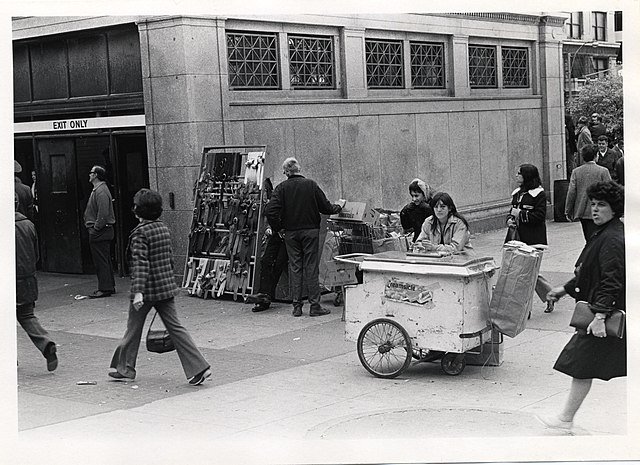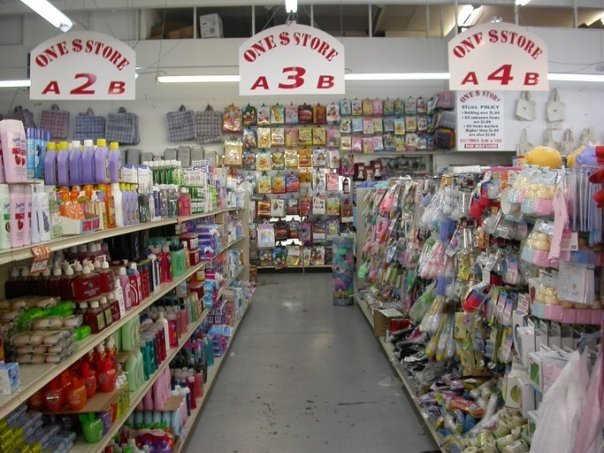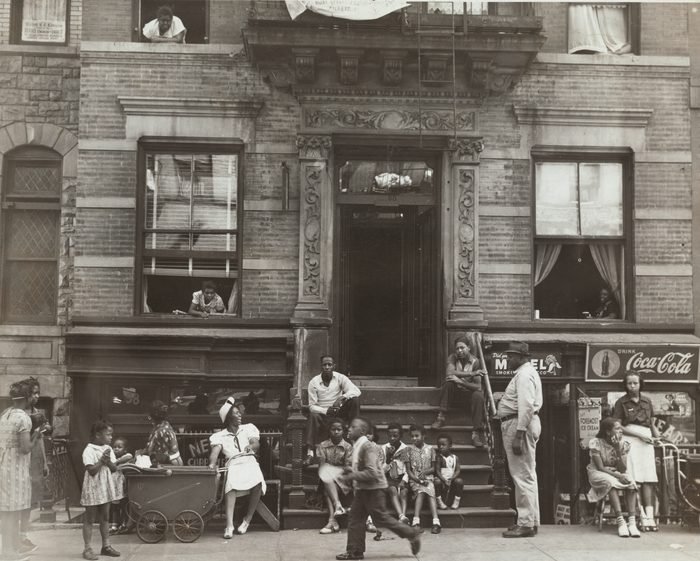
Increasing Minimum Teacher Salaries
One might be hard-pressed to turn on the evening news these days and avoid reports of some form of staffing shortage, a phenomenon which seems to cut across a myriad of professions ranging from bus drivers to hospital nurses. Public school teachers fall squarely in this concern, particularly in school districts that serve the largest shares of low-income students, often in urban and rural locales. How might public policymaking address the teacher workforce to reduce shortages, improve longevity, and reestablish its stature? In our work, we examine a pandemic-era salary reform in Missouri, home to one of the nation’s worst teacher salary landscapes, where starting, full-time public school teacher salaries can be as low as $25,000.

A Grassroots Alternative to Urban Shrinkage?
The struggle to revitalize America’s Rust Belt has been going on for so long that it’s hard to find anyone alive who lived during its heyday when it was the epicenter of American industrial capitalism. Today’s Rust Belt inhabitants work through a spiral of competing narratives, symbols, and collective memories of the past as they try to rehab and reimagine the present Rust Belt city. We call these cultural meanings place reputations, and the construction of new place reputations play a vital role in the Rust Belt’s urban regeneration.

Landscapes of Remunicipalization
After four decades of stalemated debates about privatization there is a newer and more refreshing conversation on the block: remunicipalization. Also known as “reverse privatization” and “insourcing,” remunicipalization refers to a process of returning services back to state ownership and management after a period of private sector control.

A Feminist Critical Analysis of Public Toilets and Gender
There is a distinct lack of good quality public toilets in public spaces in cities across North America, Europe, Australia, and New Zealand. With increasing numbers of unhoused people without access to private facilities, this is a growing concern. It is also an issue for anyone who wants to use public spaces, as everyone eventually needs a dignified place to go. Furthermore, the scarcity of quality public toilets disproportionately affects women, trans, and gender-nonconforming individuals, which impacts their mobility, safety, and health.

60.2
Issue 2 of our anniversary volume features an introductory essay by managing editors Richardson Dilworth (Drexel University) and Mara Sidney (Rutgers University-Newark). We revisit Michael Lipsky’s “Street-Level Bureaucracy and the Analysis of Urban Reform” published in Urban Affairs Quarterly in 1971.

Women’s Representation in Canadian Municipal Politics
The share of women in Canadian municipal politics is just thirty-one percent—far from parity. Yet it varies widely across municipalities. What explains why sixteen percent of councils have no women on them while another sixteen percent have achieved gender parity? Such differences matter because research shows that elected women tend to prioritize issues that are distinct from men, contributing to better representation of many social issues. And young women who see themselves reflected on their councils are more likely to consider running for office themselves someday.

Defying Stereotypes, Populism and Neoliberal Discourse
Our paper describes and records some of the innovative ways municipalities in Québec reacted to the COVID pandemic. It is probable that many other municipalities and local authorities reacted in similar ways in other jurisdictions. The paper also provides some elements to help understand and describe in what way municipalities are being innovative, and how this compares to, and differs from, private-sector innovation.

Partisanship and Professionalization
Since the COVID-19 pandemic in 2020, school board operations - and the elections to those positions - have received increased attention nationally and locally. As we realized the central role school boards were playing in the political landscape, we wanted to better understand how school boards were responding to both the pandemic and being increasingly in the political spotlight. We conducted a large-scale survey of school board members in multiple states during the summer of 2021. In open-ended responses on the survey, school board members highlighted their frustration with the politicization of the pandemic.

Are dollar stores magnets for violent crime?
In recent years, the United States has experienced a significant rise in economic inequality, a trend that has coincided with the rapid expansion of dollar stores, especially in the aftermath of the Great Recession. These establishments are often lauded as beacons of affordability, providing essential goods to financially disadvantaged communities. However, recent media reports and community demonstrations have cast a shadow on their presence. They highlight several concerning aspects, one of which is an alleged escalation in violent crimes in their vicinity.

Urban Affairs Review appoints Book Review Editor
Urban Affairs Review recently appointed Dr. Jill Simone Gross as Book Review Editor. The journal is eager to relaunch its book review program as a regular section of the journal. Please share new and upcoming titles with us at our dedicated email address, urbanaffairsbookreviews@gmail.com.

Consumption and Economic Security
This study reveals a built-in contradiction of capitalist housing markets by conceptualizing homeownership as a special commodity, the consumption of which involves two separate stages of conflicting purposes: limited financial resources are fought over in the consumption of mortgage products (to obtain homeownership) and the enhancement of household economic security (to sustain homeownership). It is the latter stage that determines the long-term prospect of sustainable homeownership.

Creating Local “Citizen’s Governance Spaces” in Austerity Contexts
In many cities, and particularly in a context of neoliberal austerity and governmental withdrawal from public action, citizens act upon their urban environment. If these initiatives could be presented as spaces of resistance to neoliberalism, or as political acts of reclaiming the city, these emergent practices are neither a manifestation of state retrenchment nor its outright rejection. Individuals and loosely organized collectives involved in such initiatives develop and are embedded in complex and multidimensional relationships with local institutions and third sector organizations. Montreal is a particularly interesting case to observe these practices. Bringing citizens’ initiatives and so-called social innovations to the core of public action have been among the neoliberal policy orientations pursued by some of Montreal’s boroughs and third sector organizations, increasingly relying on volunteers and private citizens to intervene in the public sphere, especially in the areas of urban gardening and food recuperation.

Explaining Value Capture Implementation in New York, London, and Copenhagen
Value capture (VC) is widely cited as a method for local authorities to continue to provide urban public goods, such as public transport or measures to make neighborhoods more climate-resilient, in the face of fiscal stress. It is based on the idea that public investments create financial value in their surroundings that accrues to various beneficiaries. In theory, this value can be captured to fund those investments. However, the application of novel value capture strategies in practice remains limited. In this article, we aim to provide a better explanation of the implementation process of value capture as a strategy for funding public transportation infrastructure.



How Migration Makes a City
In this four-part miniseries, we spoke with six scholars whose research addresses different aspects, geographies, and approaches to analyzing and understanding the relationship between migration and urban politics and culture. In this episode, we’ll hear from collaborators Deirdre Conlon and Nancy Hiemstra about their decade-long project on detention economies; Leslie Gross-Wrytzen on how migration has shaped Moroccan cities; David Kaufmann on the important but fraught role of NGOs; and Andrew Baldwin raises some important and understudied questions on the relationship between urban climate migration and property.

The Politics and Experience of Sanctuary Cities
In this four-part miniseries, we spoke with six scholars whose research addresses different aspects, geographies, and approaches to analyzing and understanding the relationship between migration and urban politics and culture. In this episode, we take a multidisciplinary look at the sanctuary city with political scientist David Kaufmann and historian Domenic Vitiello, and examine the fraught concept of climate migration with Andrew Baldwin.

Toward a state-led, market-enabled commons
What is community energy? What does green energy have anything to do with local places, democracy and common goods? How do lay people contribute to the production and the distribution of solar energy? These may be some usual questions coming to people’s minds whenever group solar or collective power campaigns pop up on the press or in the forums. Community energy is a type of community-owned, -financed, and -operated renewable energy supply in the form of a project or program initiated by a group of people united by a place, a neighborhood, and/or a set of common interests.

Intimate entanglements
In this four-part miniseries, we spoke with six scholars whose research addresses different aspects, geographies, and approaches to analyzing and understanding the relationship between migration and urban politics and culture. This episode delves into recent debates in critical geography that explore the relationships between racism, migration, borders, and labor.

Experiences of policing in gentrifying neighborhoods
Cities in the United States are well known for their segregation and sharply different experiences of policing across neighborhood boundaries. Extensive social science research has shown that “race-class subjugated neighborhoods” with concentrated populations of low-income Black and Latino residents experience harsh and punitive policing, whereas high-income and mostly-white neighborhoods experience limited police contact. In the former neighborhoods, residents also express frustration that policing does not address concerns about crime or violence, leading to these neighborhoods being simultaneously “over-policed and under-protected.”